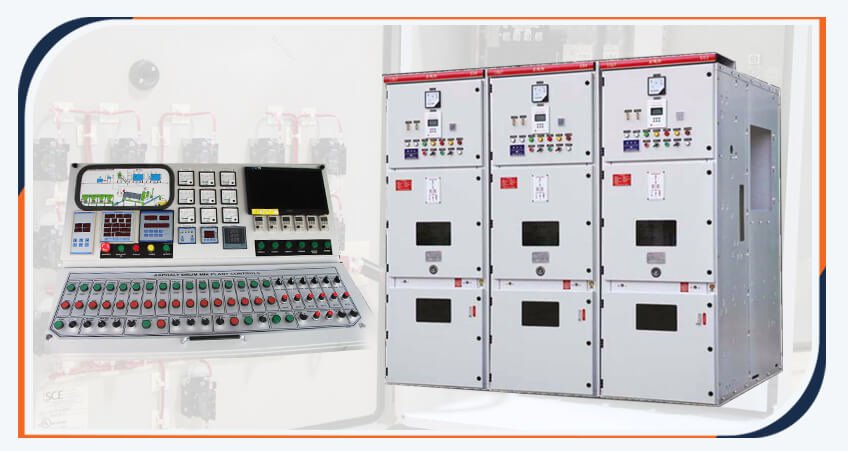Description
HT (High Tension) Panels, also known as High Voltage or High Voltage Distribution Panels, are essential components in electrical power distribution systems. These panels are used to control and distribute electrical power in various industrial, commercial, and residential settings. Here are some details about their use cases, features, and importance:
Use Cases:
1. **Power Distribution**: HT Panels are primarily used for distributing electrical power from the transformer to various distribution points.
2. **Voltage Regulation**: They help regulate and control the voltage level within permissible limits, ensuring stable power supply to connected loads.
3. **Fault Protection**: HT Panels incorporate various protective devices such as circuit breakers, relays, and fuses to safeguard the system from overloads, short circuits, and other faults.
4. **Isolation**: They provide isolation and disconnection points for maintenance and safety purposes.
5. **Metering**: Some HT Panels may include metering equipment for monitoring power consumption and analyzing energy usage patterns.
### Features:
1. **Switchgear**: HT Panels typically include high-quality switchgear components such as circuit breakers, isolators, and contactors for safe and efficient power distribution.
2. **Control System**: Advanced HT Panels may feature intelligent control systems for remote monitoring, operation, and automation.
3. **Protection Devices**: They incorporate a range of protection devices like relays, fuses, and surge arresters to protect the electrical system and connected equipment from damage due to faults and overloads.
4. **Metering and Monitoring**: Some HT Panels come with built-in meters and monitoring systems to track voltage, current, power factor, and other electrical parameters.
5. **Customization Options**: HT Panels can be customized to meet specific requirements such as busbar arrangements, enclosure types, and control schemes.
6. **Modular Design**: Many modern HT Panels feature a modular design, allowing for easier installation, maintenance, and expansion of the electrical system.
7. **Safety Features**: They are designed with safety in mind, incorporating features such as interlocks, warning indicators, and emergency shutdown mechanisms.
### Importance:
1. **Reliable Power Distribution**: HT Panels ensure reliable and efficient distribution of electrical power, minimizing downtime and disruptions in operations.
2. **Safety**: By incorporating protective devices and safety features, HT Panels help prevent electrical accidents and mitigate the risks associated with electrical faults.
3. **Compliance**: They are designed and manufactured in compliance with relevant industry standards and regulations to ensure safety and reliability.
4. **Efficiency**: HT Panels are designed to optimize power distribution and minimize energy losses, contributing to overall energy efficiency.
5. **Scalability**: They can be scaled up or expanded to accommodate future growth and changes in power distribution requirements.
Overall, HT Panels play a crucial role in ensuring the safe, reliable, and efficient distribution of electrical power in a wide range of applications, from industrial plants to commercial buildings and infrastructure projects.



